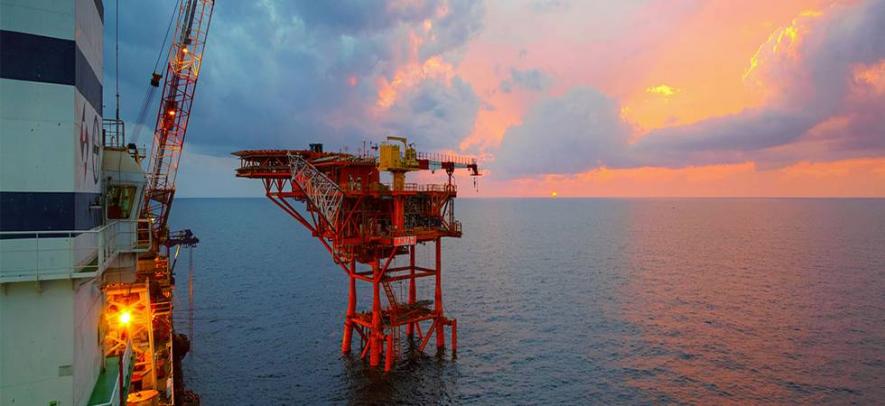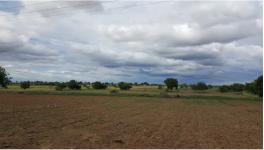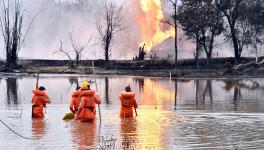Vedanta Has 51 of 87 Oil Blocks Allotted Under New Licensing Policy

Representational image. | Image Courtesy: News Nation
A total of 32 oil and gas blocks (out of 37 on offer) were allotted in the second and third rounds of auction under the new Open Acreage Licensing Policy (OALP).
This means that 87 blocks — in total — have been given away in the three rounds of auction under the OALP since last August when the first awardees were announced.
This also means that Vedanta — Anil Agarwal’s multinational resource extraction conglomerate — now has a total of 51 blocks out of these 87 blocks that were handed out under the new ‘liberalised’ policy for exploration of oil and natural gas.
The results of the OALP rounds II and III were reported by the Business Standard.
Also read: 41 Oil Blocks To Vedanta Is Corporate Bonanza, While ONGC Is Bled Dry
However, the winning bidders have only been shortlisted by the Directorate General of Hydrocarbons (DGH) and are waiting for “the government’s final clearance, likely this week, to sign the contracts.”
Vedanta has won 10 blocks — five each — in these two rounds. Earlier, Vedanta had been awarded 41 out of 55 blocks on offer in the first round.
Although 37 blocks were on offer in these two rounds — 14 under the OALP-II and 23 under OALP-III — five of them found no bidders.
State-run Oil India Limited (OIL) won 12 blocks — six each in both rounds. In the first round, OIL had won 9 blocks.
India’s largest crude oil and natural gas company — the Oil and Natural Gas Corporation (ONGC) — won 8 blocks in these two rounds. Last time, ONGC had only won two. The Indian Oil Corporation (IOC) also won a block.
To be noted, Reliance Industries Limited (RIL), along with its British partner and global oil behemoth BP Plc, also won one block.
BP-RIL had reportedly bid for one block in the Krishna Godavari Basin on the east coast — the same KG Basin where RIL has been involved in long-standing disputes with the government.
This was the first time that BP had bid for an exploration block after entering India in 2011 after buying 30 per cent stake in RIL’s 21 oil blocks. However, since then nearly all of these blocks, save a couple, have been surrendered.
Of the 14 blocks offered in round-II, eight are on land, five are in shallow water, and one is in ultra-deepwater.
In round-III, out of the 23 blocks on offer, 19 are on land (including five coal-bed methane), three in shallow water, and one in deepwater.
The launch of round-II of bidding under the OALP was delayed by six months and took place on January 7, 2019. And round-III of the OALP was launched on February 10, 2019.
Also Read: BJP Allows Oil Companies To Operate Beyond Contracted Area
Further, the last date of bidding under round-II was also extended by a month to April 10 — to coincide with the bid deadline for round-III. OALP-II and OALP-III were running concurrently.
What is OALP?
The Open Acreage Licensing Policy (OALP) was launched in June 2017 — as part of the Hydrocarbon Exploration Licensing Policy (HELP).
The HELP was approved in March 2016 and replaced the New Exploration Licensing Policy (NELP), which had been in effect since 1999.
Round-I under the OALP was the first auction of oil and gas exploration blocks in the country in eight years.
Under OALP, the companies can carve out which geographical areas (blocks) they want to carry out exploration and development activities in — with the help of the geological & geophysical (G&G) data on India’s sedimentary basins stored in the newly launched National Data Repository (NDR).
While acreage refers to an area of land, ‘open acreage’ here refers to the fact that companies can now choose which area to bid for. Earlier, the government used to identify the oil exploration blocks and place them for auction.
The companies can submit Expressions Of Interest (EOIs) at any time of the year and the OALP also allows for bidding to take place a number of times in a year, but the government has indicated that as of now, EOIs would be accumulated and bidding would take place twice a year.
The policy seeks to bring about 2.8 million sq km of unexplored area under exploration for oil and gas.
While the NELP was formulated in 1997 with the aim of ushering in private companies into oil exploration in a big way, the HELP further liberalises the oil and gas exploration rules.
Among other things, the NELP mandated that exploration licenses be awarded only through competitive bidding and national oil companies were to compete on an “equal footing” with private Indian and foreign companies.
The HELP has the following four broad aspects:
i) uniform license for exploration and production of all forms of hydrocarbon
ii) an open acreage licensing policy
iii) move from the earlier profit-sharing model to a revenue-sharing model
iv) marketing and pricing freedom for the crude oil and natural gas produced
Get the latest reports & analysis with people's perspective on Protests, movements & deep analytical videos, discussions of the current affairs in your Telegram app. Subscribe to NewsClick's Telegram channel & get Real-Time updates on stories, as they get published on our website.
























